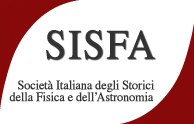Speaker
Description
I review the algebraic foundations of quantum mechanics. They have been suggested since the birth of this theory till up to present year. They are the following ones: Heisenberg-Born-Jordan’s (1925), Weyl’s (1927), von Neumann’s (1936), Segal’s (1947), T.F. Jordan’s (1986), Morchio and Strocchi’s (2009) and Bucholz and Fregenhagen’s (2020).
They are illustrated according to an increasing degree of formalism, from the mere introduction of matrices till up to group theory and C*-algebras. Two particular cases are presented in details: Von Neumann’s ‘conversion’ from Hilbert space to the operators algebra and the foundation of quantum mechanics (as well as Feynman’s path integrals) upon the algebra of interaction Lagrangians.
Moreover, these foundations will be inspected whether they may be rationally re-formulating as problem-based theories which make use of no more than constructive mathematics.
Bibliography
Born M., Heisenberg W., and Jordan P. (1925), “Zur Quantenmechanik II”, Zeitschrift für Physik, 35, 557-615, 1925 (B. L. van der Waerden (ed.) (1968), Sources of Quantum Mechanics, New York: Dover).
Bucholz D. and Fredenhagen K. (2020), “Classical dynamics, arrow of time, and genesis of Heisenberg commutation relations.
Bucholz D. and Fredenhagen K. (2020), “From path integrals to dynamic algebras: A macroscopic view of quantum physics”, Foundations of Physics, 50 (7), pp. 727-734
Jordan T.F. (1986), Quantum Mechanics in Simple Matrix Form. New York: Wiley & Sons.
Murray F.J., Von Neumann J. (1936), “On rings of operators”, Ann. of Math., 37, pp. 116–229.
Segal I.E. (1947), “Postulates for general quantum mechanics”, Ann. Math., 48, pp. 930-948.
Strocchi F. (2018), A Primer of Analytical Mechanics, Berlin: Springer, Chp. 7.
Weyl H. (1928), Group Theory and Quantum Mechanics, New York: Dover.

